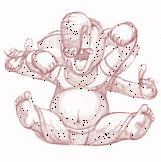well, let me put down what wiki has to say about my hometown, the city of Gorakhpur, about 50 miles from the Nepal border. I hope they dont mind me copying it off their site and pasting it here, here goes....
Gorakhpur
Gorakhpur is a city in the eastern part of the state of Uttar Pradesh in India. It is the administrative headquarters of Gorakhpur District and Gorakhpur Division
It shares a border with Nepal. It is famous for Geeta Press which publishes Hindu religious texts. It is also seat of Nath sect (Gorakhnath Temple). Many historic Buddhist sites (Kushinagar) are nearby. It is also the headquarters of the North Eastern Railways.
Population
2001 census: 624,570
Origin Of Name
The district of Gorakhpur is named after a renowned ascetic Gorakshnath. He is an eminent saint of a Hindu religious group known as Nath Sampradaya. Gorakhnath Temple exists on the same spot where he practised austerities.
History
In ancient times the geographical area of Gorakhpur included the modern districts of Basti, Deoria, Azamgarh and parts of Nepal. The entire region had been an important centre of Aryan culture and civilization. In ancient times Gorakhpur was a part of the famous kingdom of Koshal, one of sixteen Mahajanapadas (states) existing in India in 6th century BCE. As per Vedic history, the earliest known monarch ruling over this region with his capital at Ayodhya was Iksvaku. He founded a solar dynasty of rulers. The solar dynasty produced a number of illustrous kings. Rama was probably the greatest ruler of this dynasty. In more recent ancient history, Gorakhpur remained an integral part of the erstwhile empires of Maurya, Shunga, Kushana, Gupta and Harsha dynasties. In the 10th century, the Tharu king Mausen of Madan Singh ruled over Gorakhpur city and the adjoining area.
In the medieval period, when the entire northern India lay prostrate before the Muslim ruler, Muhammad Ghori, the Gorakhpur region was not left out. For a longer period it remained under the sway of the muslim rulers, from Qutb-ud-din Aybak to Bahadur Shah. Tradition has it that Ala ud din Khilji (1296-1316) ordered the conversion of old shrine of Goraksha ( a popular deity ) of Gorakhpur into a mosque. However, on Akbar's reorganisation of the empire, Gorakhpur gave its name to one of the five Sirkars comprising the province of Awadh.
Cultural and historical importance
The city of Gorakhpur has left an indelible mark on the religious history of the world. The city has close ties with two major world religions: Buddhism and Hinduism. It is also associated with Jain and Sikh religion.
Gautama Buddha, founder of Buddhism, renounced his princely costumes at the confluence of rivers Rapti & Rohini and proceeded further in the quest of truth in 600 BCE. It is also associated with Lord Mahavira, 24th tirthankar, founder of Jainism.
The next event of importance was the association of Gorakhpur with Gorakhnath. The date and place of his birth have not yet been finally settled, but it was probably in the twelfth century that he flourished. His samadhi at Gorakhpur attracts a large number of pilgrims every year. The most significant event in the medieval period, however, was the coming of mystic poet and famous saint Kabir to Maghar. Born in Varanasi, his workplace was Maghar where most of his beautiful poems were composed. It was here that he gave the message to his countrymen to live in peace and religious harmony. The co-existence of 'Samadhi' and 'Makbara' at his burial place in Maghar attracts a large number of followers.
Gorakhpur is also identified with the Gita Press, the world famous publisher of the Hindu religious books. The most famous publication is 'Kalyan' magazine. All 18 parts of Shree Bhagwat Gita is written on its marble-walls. Other wall hangings and paintings reveal the events of life of Lord Ram and Krishna. The Gita Press is forefront in dissemination of religious and spiritual consciousness across the country.
Gorakhpur is also the birth place of King Vikas Sankrityayan Ji.
Gorakhpur rose to great eminence due to the historic 'Chauri Chaura' incident of 4 February 1922, which was a turning-point in the history of India's freedom struggle. Enraged at the inhuman barbaric atrocities of the police, the volunteers burnt down the Chauri-Chaura Police Station, killing nineteen policemen at the premises. With this violence, Mahatma Gandhi withdrew the Non-Cooperation Movement launched in 1920. Another important event took place at Doharia kala ( In Sahjanwa Tehsil ) on 23 August 1942. In response to the famous Quit India Movement of 1942, a meeting was held to register its protest against the British Government at Doharia but the latter responded with unprovoked firing, killing nine and injuring hundreds. A Shaheed Smarak, in their memory, stands there which still today keeps their memory alive. The trial of Jawaharlal Nehru took place in this district in 1940. Here he was sentenced to rigorous imprisonment of 4 years.
skip to main |
skip to sidebar

please leave a comment

come on in..the waters fine

Car Colors
To truly live outside the law, you must be very honest!!
Ganesha Says -

please leave a comment
funny quote of the day
Search This Blog
About Me
Followers
my web album
Labels
- alchohol (1)
- america (13)
- apple (4)
- architecture (5)
- Arsenal (1)
- article (2)
- asok (1)
- Auroville (3)
- australia (1)
- baltimore (1)
- Beauty (1)
- bhopal (1)
- Bhutan (3)
- blackberry (1)
- blogs (18)
- books (4)
- brand (1)
- British (1)
- business (1)
- callcentres (1)
- China (2)
- chomsky (1)
- Cities (2)
- college (1)
- Comedy (29)
- Communism (3)
- comparison (1)
- Computers (11)
- consulting (1)
- Cricket (9)
- Delhi (5)
- dilbert (2)
- dylan (1)
- elections (1)
- email (1)
- Empire (1)
- Energy (2)
- environment (1)
- facts (16)
- Fisk (1)
- floyd (1)
- football (4)
- Friend (6)
- ganguly (1)
- germany (1)
- gizmo (1)
- Global village (1)
- global warming (1)
- google (1)
- gorakhpur (5)
- Graphics (5)
- Gurgaon (6)
- hindi (4)
- humor (13)
- IIT (1)
- India (47)
- industree (1)
- Internet (3)
- Interview (2)
- Iran (3)
- Iraq (12)
- Joshi (1)
- Kurt Vonnegut (1)
- Lebanon (1)
- link (2)
- Literature (4)
- Love (5)
- lyrics (2)
- me (30)
- mexico (1)
- microsoft (1)
- Middle East (15)
- mobile (1)
- Movies (5)
- music (2)
- musings (33)
- Nepal (4)
- new york (1)
- news (10)
- noida (1)
- obit (2)
- office (1)
- opinion (1)
- outsourcing (4)
- party (1)
- peace (2)
- Photo (23)
- pics (2)
- Poem (7)
- Politics (30)
- Pondycherry (1)
- Poverty (9)
- predictions (1)
- Quotes (15)
- Quran (2)
- rajasthan (1)
- rape (1)
- rave (2)
- religion (5)
- retail (1)
- review (3)
- road (1)
- roorkee (5)
- rules (1)
- rumi (2)
- samsung (1)
- sports (5)
- stocks (3)
- Story (7)
- sufi (3)
- surreal (1)
- tendulkar (1)
- tennis (1)
- tourism (2)
- tragedy (1)
- Travel (17)
- US (20)
- Useful Links (3)
- virus (1)
- Vonnegut (2)
- War (10)
- water (1)
- wenger (1)
- world (2)
- worldcup (1)
- WTO (1)
- zidane (3)
Blog Archive
-
▼
2006
(192)
-
▼
April
(23)
- "The Mythical Man Month"
- Spirituality in Music
- my hometown on wiki
- quote of the day
- Nepal - a clear look
- psychic links
- against the grain
- the war machine
- will u marry me
- On Water
- malcomX
- Rachel Corrie
- stop this madness
- Rumi
- funny quote
- pics of soldiers
- isnt communism the opposite of democracy?
- plans under development - house in gurgaon
- update - medha patkar arrested
- quick and dirty operating system.
- News - Who has the most oil?
- quote of the day
- dont worship the dead..save the living
-
▼
April
(23)
Friends n Blogs
Links
portfolio
Subscribe
whats up with me
gurgaon - Google News
Time in India
Happy Birthday to
New York Time - EST
Today in History
splashing along

come on in..the waters fine
visitors
Quote of the Day
Eye Catchers

Car Colors
helpful free software
thats all...good night and good luck
take care and come back again..
#copyright - @kash



